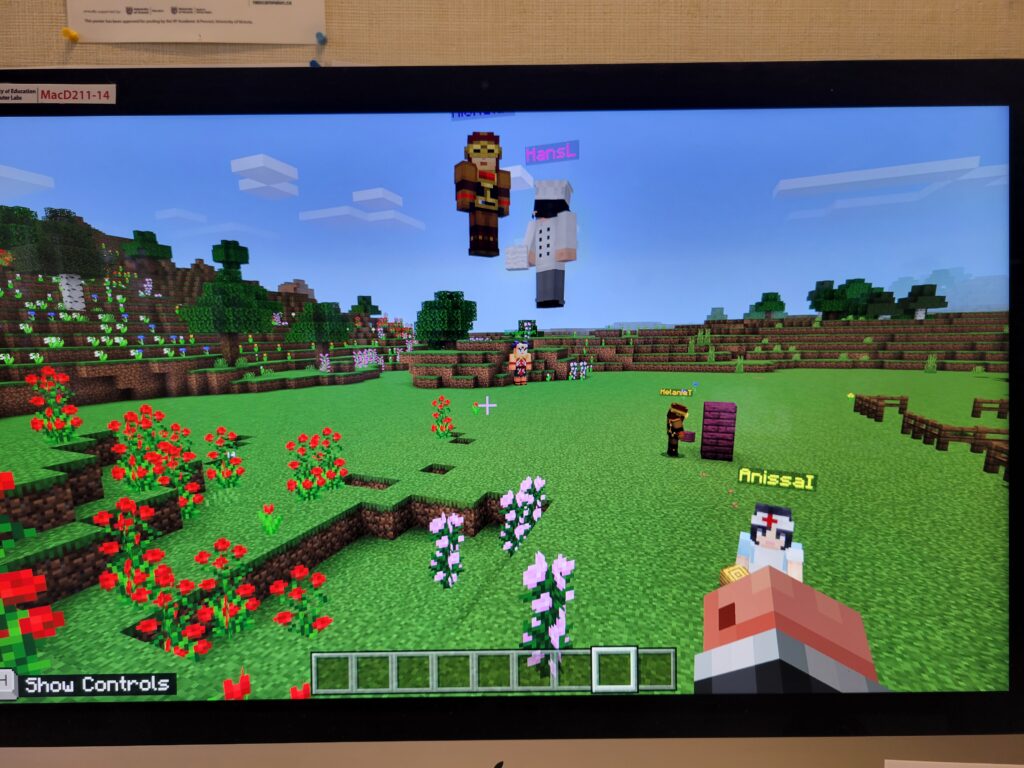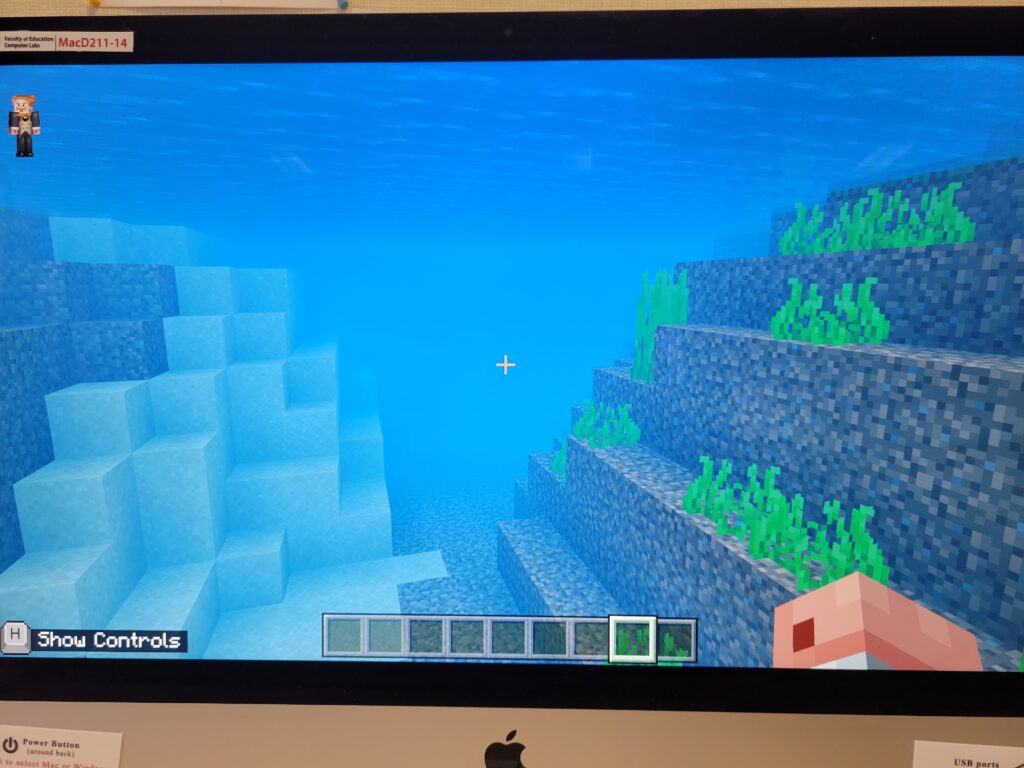Category: EDCI 336 (Page 1 of 3)
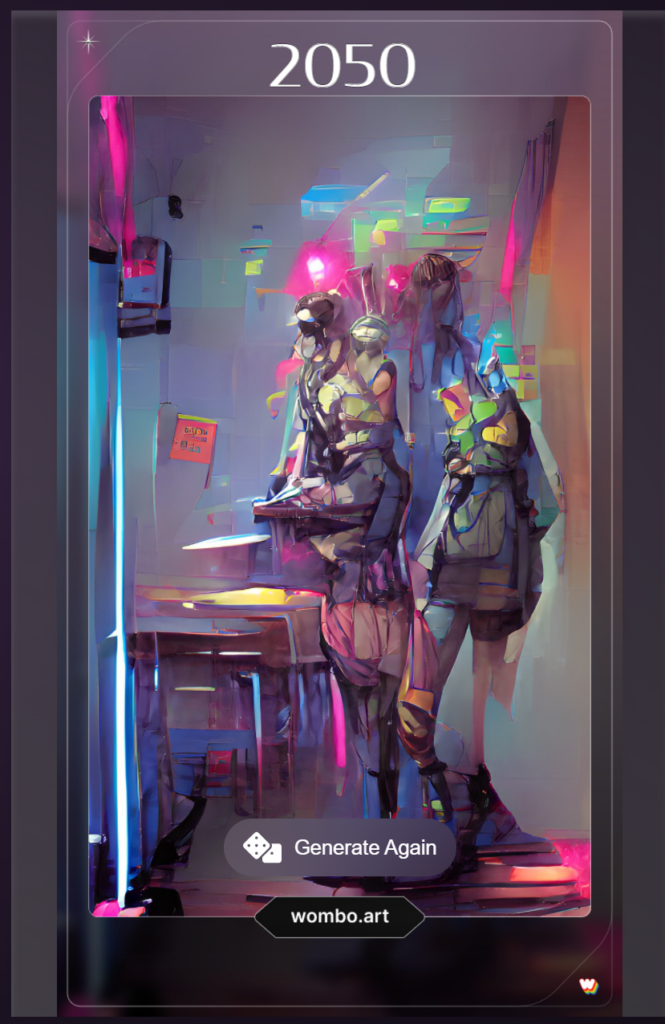
It was Monday morning and the students in Mrs. V’s Grade 1 class were starting their school day with the typical morning question: “Would anyone like to share what they did this weekend?”. “My grandma was telling me a story and she put her hand in a funny way” said Bree as she raised her hand towards her ear with her pinky finger and thumb extended while the other three fingers were bent towards the palm.
“What is that!” shouted Vanessa. All the other students were now trying to replicate the same hand motion Bree was doing. As the students in Mrs. V’s class were trying to bend their hands, Mrs. V remembered where that hand gesture was from: it was the hand gesture for a telephone!
“Students, do you know what Bree’s grandma was imitating when she made that hand gesture?”
Sean while giggling says “looks like she is holding a banana to her ear”. The other students began to laugh. Mr. V begins to tell the students that Bree’s grandma was making a phone with her hand. “A Phone was a device that was once carried around in your pocket. And when I was little phones were connected to the wall inside your home. You could only get into contact with people when they were home! How crazy is that?”
All the students furrowed their brows and stared blankly at Mrs. V. Jess raised her hand and asked Mrs. V “well what if you were not home, how did people talk to you?”. “Did you all just stay home waiting for the phone to ring?” said Michela. After the class settled down with their chatter Mrs. V used her Interactive Wall Board to search for old photos of phones for students to see.


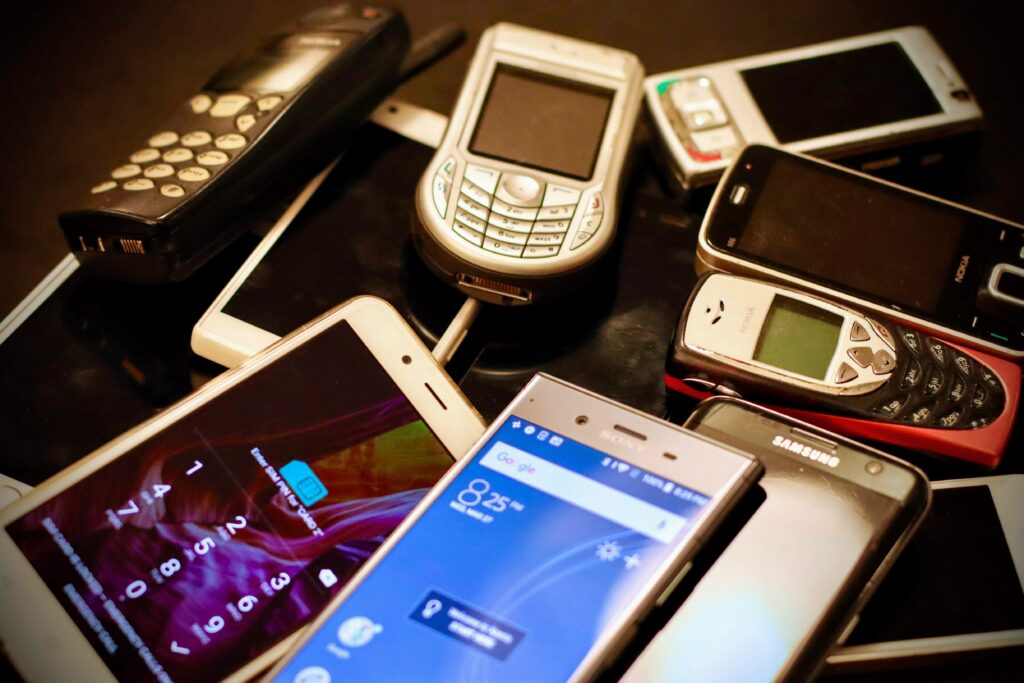
After the students viewed the old photos of the telephone Mrs. V showed her students what a “phone book” was. She explained to the students how everyone’s phone number was listed in a book. They laughed at the idea of a book full of phone numbers. The students could not get over the size of the phone book too because physical books are slowly disappearing in society now. One can still find books in the few book stores that are left in society. But just as Blockbuster disappeared, so is the bookstore. It does not mean people do not read anymore, but there is no need to have a store for books when you can easily get a book in digital form on any device.
The students were also blown away by what a graphite pencil was and how students wrote everything on paper. As now for students everything is digital thus there was no need for good old paper and pencil work. Students did still learn to write, but typing and speech to text had become so advanced there was no real demand for writing anymore. Yet writing was still taught in school because it was taught as a fundamental skill for people. But Mrs. V and other teachers saw that this skill was slowly being taught less. As time went on there seemed to be less of a concern for writing, and was a second thought in the education system. As technology continued to be increasingly interactive and hands free, there was no need for simply writing words down when they can be spoken and captured on devices into written words. At least the skill of reading is still prioritized and needed!
The class further discovered the other things that have drastically changed due to technology: Television, the internet, vehicles, even going to the store and purchasing items have drastically changed. The students compared these types of technology they have in 2050 to what it looked like in 2022. The students were amazed and questioned why we did things in the past “the long and hard way”.
It was time for the students outside break. As the students gathered to get outside one of the students named Steph asked “Mrs. V, do you think technology will make my life better as I grow up, just like it made your life better?”. “Oh probably in ways you have no clue about yet!” Mrs. V responded.
As the students left for break Mrs. V reflected on the changes that have occurred in the classroom. Technology has made life easier in some peoples opinion but I believe it is more than that. Technology has made a great impact within the classroom and more importantly its inclusivity. More students are able to participate in the classroom as technology has given them a means to communicate and represent their knowledge in the classroom. Students with disabilities are able to participate in classrooms to the fullest ability because of the computer programs that were created in the last 10 years. Not to mention the accessibility of technology for students: all students have a device and wifi is something that is freely accessed all over cities. No longer do people pay for their own wifi at home, it is everywhere. The costs of devices are no longer a burden on families, as every student has their own personal device throughout their school years. The accessibility of technology in the classroom has made learning increasingly effective for all students, because all students are included.

Pets were only allowed in schools when some kid brought their pet to show and tell, but now classrooms are having classroom pets! I have heard of teachers having classroom pets such as guinea pigs, rabbits, frogs, geckos or fish. Teachers have even had animals like ducklings or butterflies in order to show students their how to care and tend to an animal that is growing. Some teachers have introduced animals into the classroom to help students with anxiety and boost moods such as having a dog in the classroom.
I was volunteering in a Grade 1 classroom in Victoria and the teacher brought her dog into her classroom. She told me her students took a real liking to her dog and sought out the dog when students needed some quiet time to sit and pet the dog. Of the students in the classroom who had behavioral needs, they bonded well with the dog and became calmer in the dogs presence. The dog was never a distraction to the students but became a part of the classroom community. Thus I have seen the benefits of having a class pet.
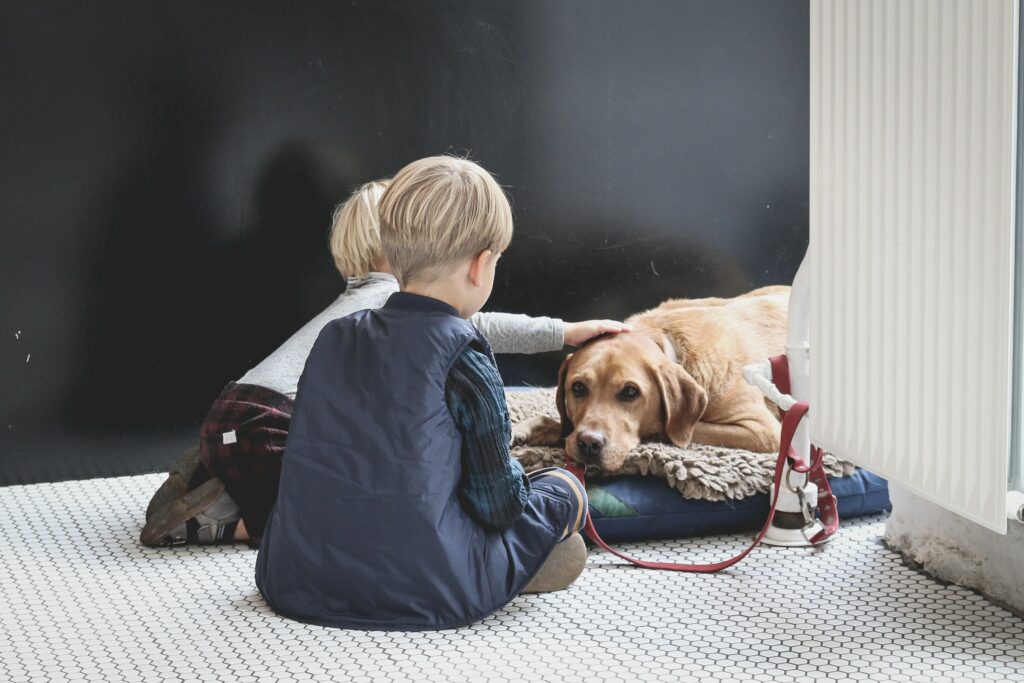
It will be interesting if this trend increases due to the positive impacts it has on students. When one takes care of an animal it teaches responsibility, nurturing and empathy to the person. Thus these skills are important to nurture in children as it influences their personality and well being.
There are tons of YouTube videos to check out if you are considering in getting a class pet. Such as: what pet to get, how to take care of various pets in the classroom, how therapy dogs benefit the class and all! ALSO if you want to start off small and thinking a pet is too much for a class. Why not get a classroom plant?
Remember there are things to consider when getting a classroom pet: where is the pet from ? Do not leave the pet alone in the school, especially if it is a mammal. Consider the safety of the animal while in the classroom. and allergies and other student health risks.
Resources:
One of my favorite places to walk around is Beacon Hill Park In Victoria. I love the trees, the flowers and especially all the animals within the park. Over the years I have collected a bunch of pictures and videos from in the park thus I thought it would be great to share some of my pictures and videos of the local animals that are in the park. This can be a activity for students as well. Students can explore and take photos of the local animals around where they live and play!

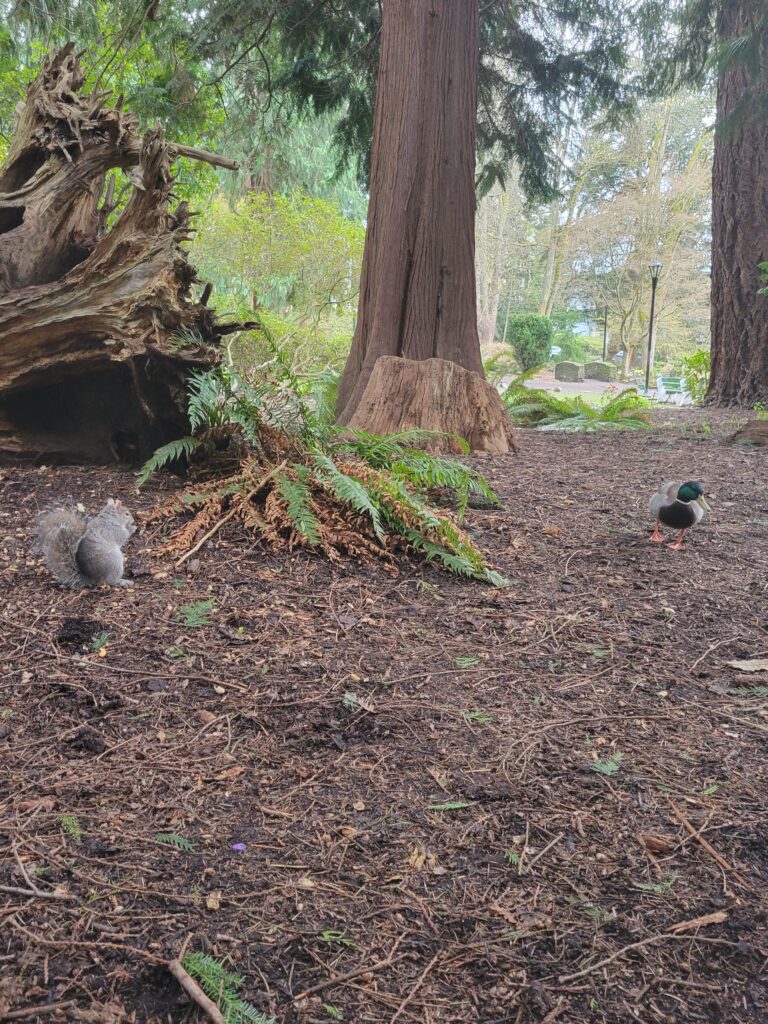
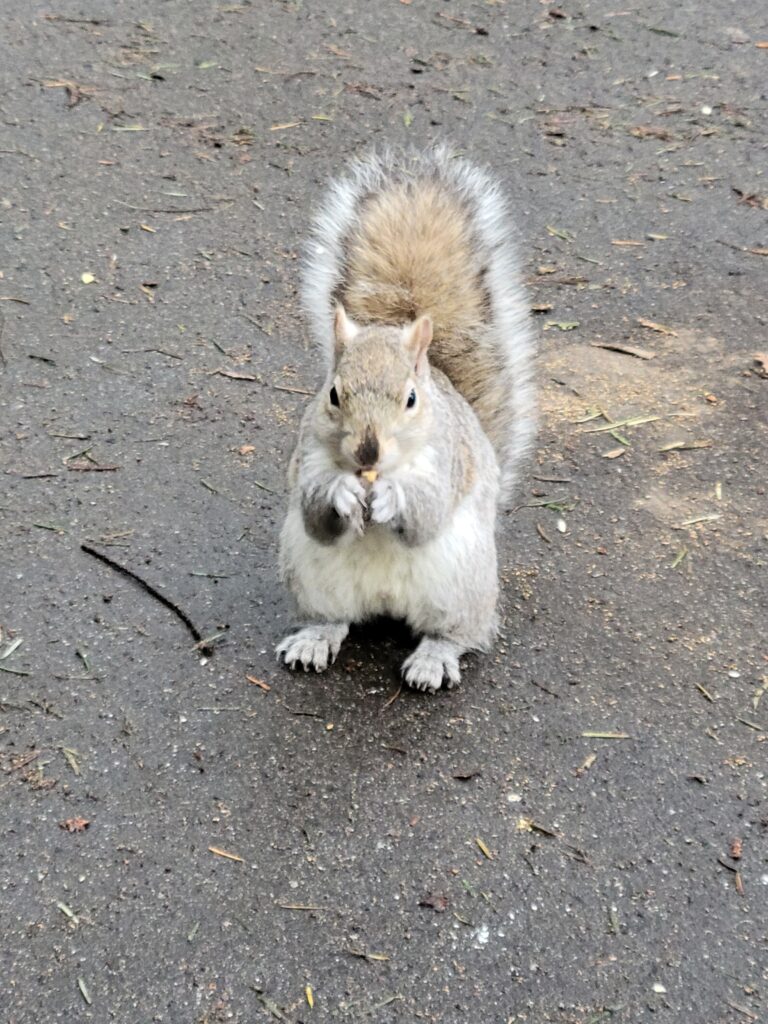
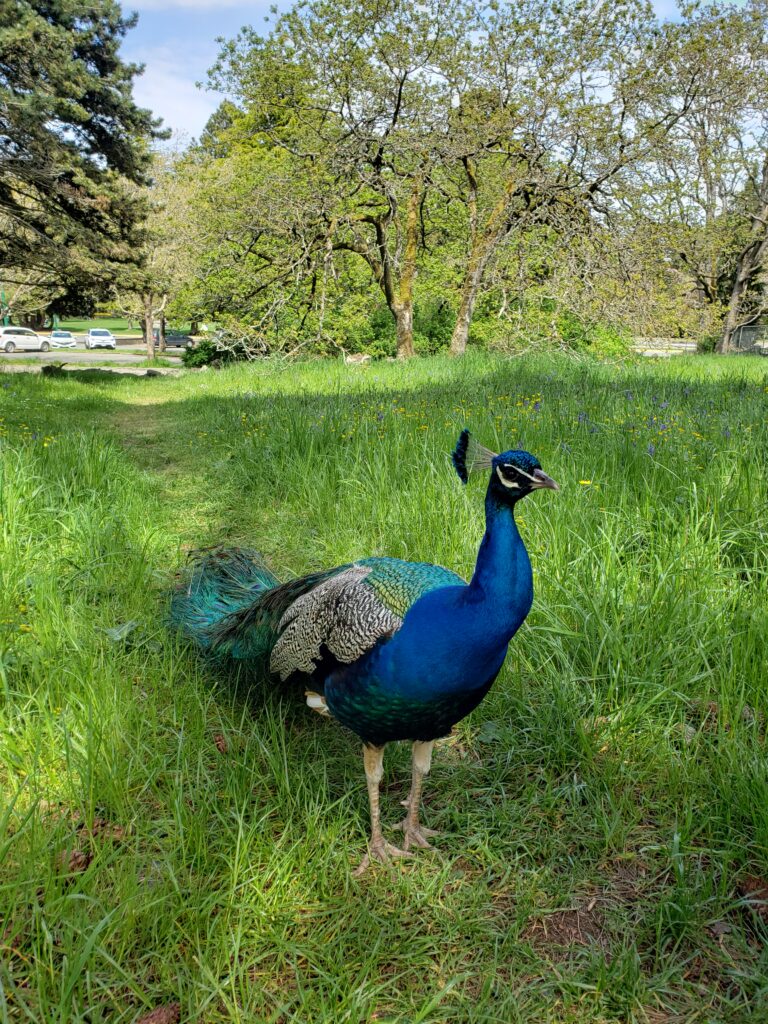
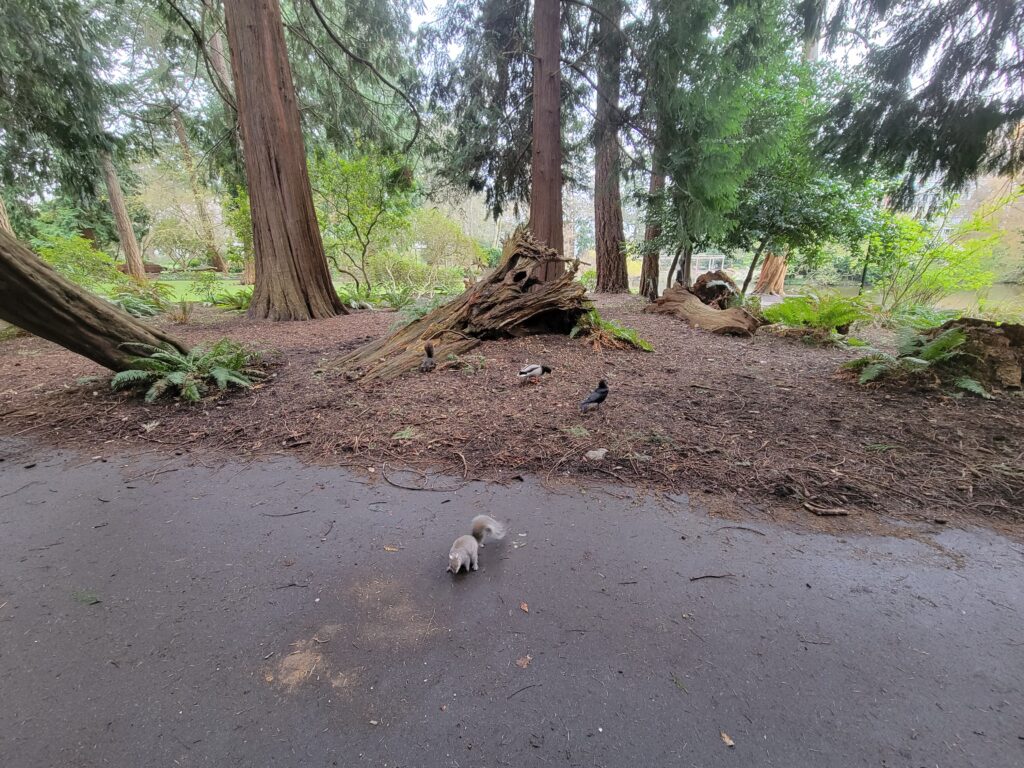
With inspiration from Joanna Lake and her mood raters that she does with her class. I created my own with some funny animal pictures!
All pictures were downloaded from Unsplash.com

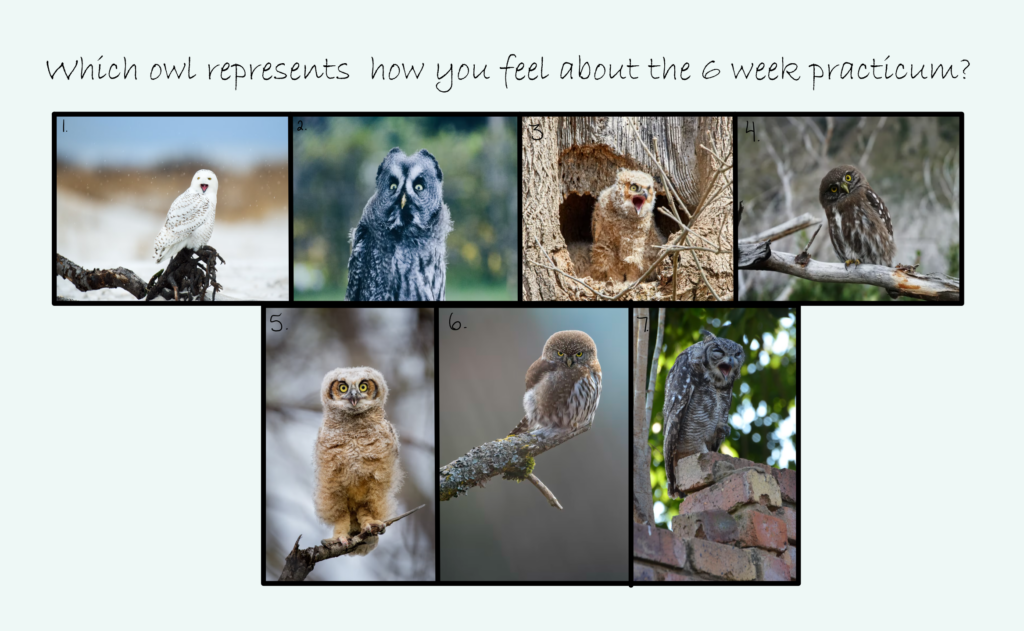
I love this video of Flamingos for Planet Earth! The Flamingos dancing from side to side as a group is priceless. I truly love watching shows like Planet Earth because I enjoy learning about animals and facts about them. These Flamingos are Andean Flamingos and are found high in the Andes Mountains of South America. Yet, Flamingos live all around the world from South America to Africa and small parts of Asia and Europe. Flamingos live in and around salt or alkaline bodies of water, thus their habitat is characterized by “lack of vegetation”. Since Flamingos live around extreme environments like salt or alkaline lakes the algae and shrimp brine is what they are left to eat in the area. Algae and shrimp brine have an abundant of carotenoids. Carotenoids builds up in the Flamingos body and gives their feathers the pink hue.
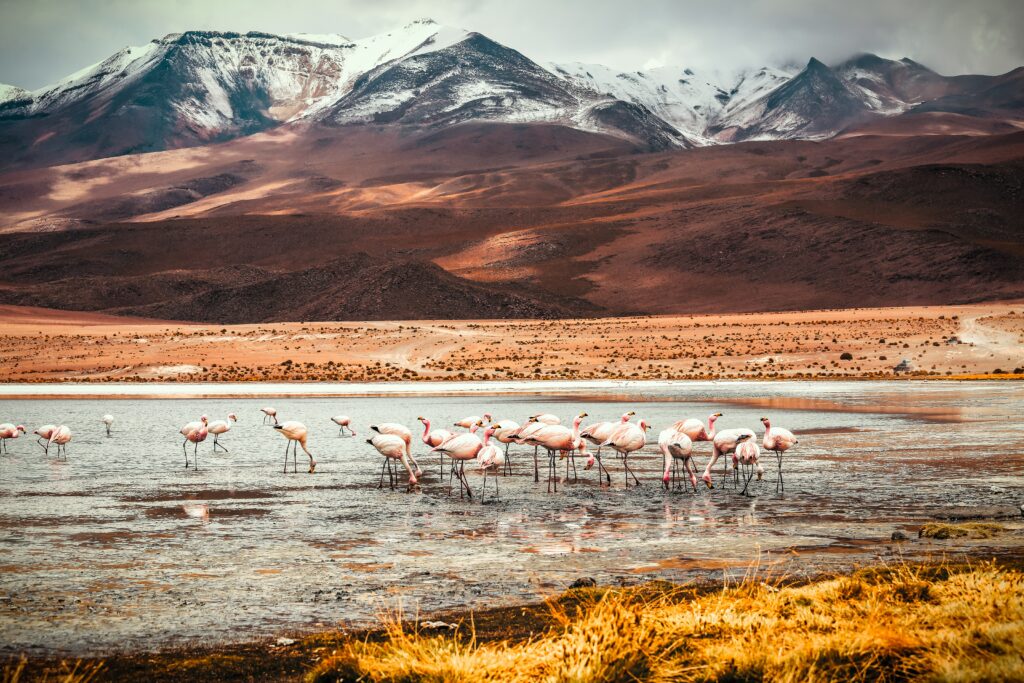
I found out all of this information after watching this clip from Planet Earth and being interested about Flamingos! Thus this could turn into a fun activity for students.
Students would find a fun video of an animal, not a pet that lives in a house but a animal that lives in nature or the ocean. The student would take that video and find out fun facts about the animal and where the animal lives. With the help of Google Earth they can locate the area of where the animal lives and explore that area. Students can take a screenshot of the area they are exploring and where the animal lives.
For example I chose the Andean Flamingo lives in the Andes mountains therefore students could locate where the Andes are see what the geographical space looks like.
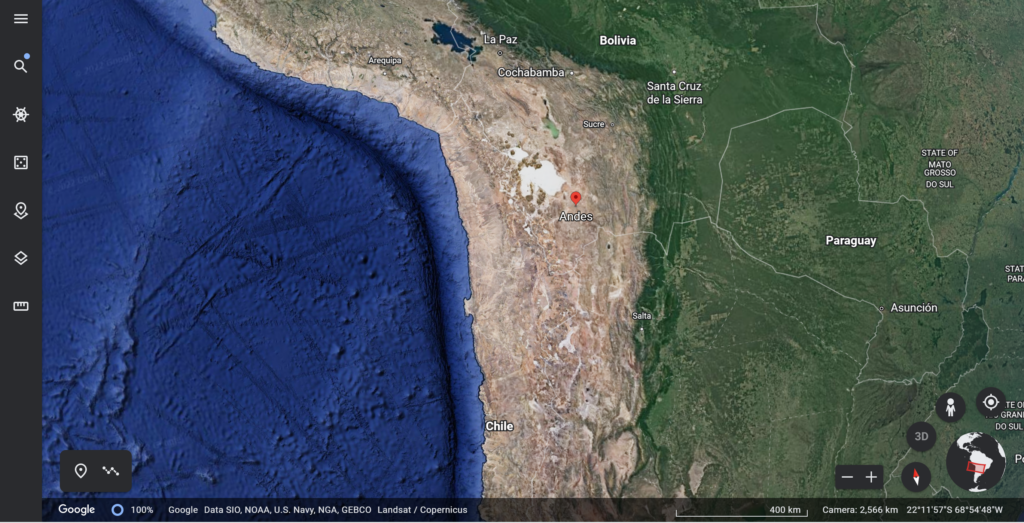
What does the Andes look like?


Here is a Photo of a Andean Flamingo in its habitat!

Where are the Atacama Salt Salts?
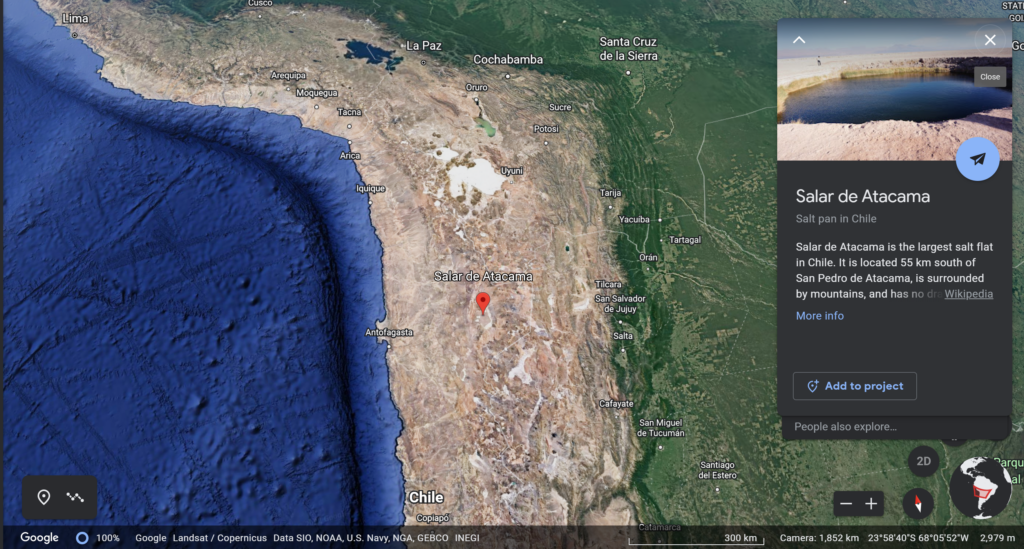
This allows students to make connections and understand the habitats of various animals by using Google Earth to go directly to those locations around the world.
Resources:
https://seaworld.org/animals/all-about/flamingos/habitat/
https://kids.nationalgeographic.com/animals/birds/facts/flamingo
This video was captured in the Canadian Rockies, bears coming out of hibernation and scratching that winter long itch. Well not actually, the bear is scratching their backs on the tree because it is a form of communication. Bears can communicate via their scent that is rubbed on the tree. This signals signs of virility and about their overall health to potential mates.
For students you can show this video to them and get them discuss what they see the bear doing. Is the bear dancing, scratching its back or something else? It would be great to see younger students imagination as to what the bear is doing and why. As a teacher you can make connections to the English Language Arts curriculum such as writing a story about what the bear is doing in order to spark their creativity. Or get students to pick a song the bear should be dancing to, or choose their favorite song that they dance to and why they enjoy it. This could also be a jump off point for students to find videos of other animals behaving in silly ways and discover why they are actually acting in that way. Either way this video sure is adorable and can to utilized in many ways into the classroom for young and older students. lastly, as a teacher you can expand on the Science curriculum and learn about bears, such as what they eat, how they survive and the various types of bears.
Teachers can introduce and teach their students about The Great Bear Rainforest that we our honored to live close to. The Great Bear Rainforest has an abundant of wildlife including the rare Spirit Bear. The Kitasoo/Xai’Xais Nation has a beautiful origin story of the Spirit Bear along with their initiative to protect the Spirit Bear. I have attached the link here:
In conclusion, just through viewing the video from Planet Earth II myself I began to dive into more information on bears, their habitats and ways to protect bears here in British Columbia. Thus the use of these videos in classrooms could hopefully spark that same kind of interest in students as well!

Resources:
https://www.sciencedaily.com/releases/2007/09/070909221303.htm
https://journals.plos.org/plosone/article?id=10.1371/journal.pone.0247964
March 23

I purchased a Garmin Watch a few years ago and absolutely love it. It keeps me in check with how active I am, monitors my heart rate, stress levels and much more. I hear people more recently discussing the number of steps they take in a day, and participating in step challenges in order to increase their overall health. I wonder if smart watches will become something that everyone or a mass majority of people will have as a way to prevent certain diseases such as heart attacks and strokes? And how will this impact our health?
My first thought was about how we have improved with reaching medical professionals. Starting with Life Alerts and detecting falls in people but now the new Apple watches can detect a serious fall and tell whether the wearer of the watch is unconscious and dial 911. The watch can even send the location of the person to the 911 operators. It is crazy how technology is evolving and improving even in the last decade and I wonder where it will go in another decade and beyond. We are aware that people who wear these smart watches have even prevented death due to a heart attack because their watch detected an alarming increase in heart rate. Thus will this technology improve to detect other diseases such as strokes or seizures? Let’s hope so because think of the lives it will save!
Questions from Class
What was the worst thing about online learning:
For me the worst thing about online learning was how easily distracted I could become while being online. Especially if my camera is off. In classes where professors had us keep our cameras on, I paid attention and was fully engaged. But professors who told us to turn our cameras off, I do not remember a thing about those classes. Further, I missed being in person with people. When we had our first two weeks of this semester online, I missed my cohort. Not being able to be in person with them sucked, I missed the fun conversations that would occur between classes. Or the funny banter that occurs during class. I found when participating online, we lost those interactions and we tended to be quieter in zoom classes.
What was the best thing about online learning:
The best thing about online learning was the extra time I had. Because I did not have to get up and get ready to get myself to school, or take the bus home. I was able to shut my computer and already be at home. When school was online for those first few weeks I went out for a 5 km walk in between classes or after class. And eat a lot healthier because I always had time to make myself something to eat while at home. I find I am a lot more tired at the end of the day in comparison to when school was online, thus I rarely have energy at the end of the day to do anything. It may be because I am more active during the day being at school and interacting with my cohort and professors, which I enjoy. But by the end of the day I am exhausted and lazy (in my opinion) and I am missing out on being physically active.
What has the Pandemic taught us about online learning?:
I believe that the pandemic has shown us that online learning works for some people and not others. Online learning during the pandemic was needed due to the unknowing situation we were facing globally early on the pandemic. But as time passed many students needed to be back in the classrooms to learn effectively. While those who needed to stay home for longer were able to because of the technology we had. It shows that for students in specific situations they can stay home and learn. Online learning also brings up the discussion of availability because many families did not have WIFI or devices for their children to participate in online learning. We make large assumptions that because WIFI is everywhere that every house hold has it, but this is not always the case. Thus the discussion on affordability and access should be considered for online learning.
March 18th
I now understand why students love Minecraft! It was so much fun to be in a virtual world with my fellow classmates. It was great that we could stick together and explore the world we were in, or explore the world on your own- like I did.
I started off by learning the controls in the space we were in, then learning how to fly. Once I figured this out, I set out on an adventure to explore the World we were in! I discovered the animals on the land and later that you could destroy them and collect items. Further I went swimming and began collecting fish. I later dug a tunnel on the side of a mountain. I got completely lost in the world I was in and could not find anyone from our class. I even stood on top of the mountain looking around to see if I could find anyone, but I had gone so far off the beaten path I could not connect with anyone.
I would be very interested in learning about the educational side of Minecraft. Such as getting students to work together to build something or having them learn about something. I would love to further explore all that Minecraft has to offer. I may even get my own subscription !!

